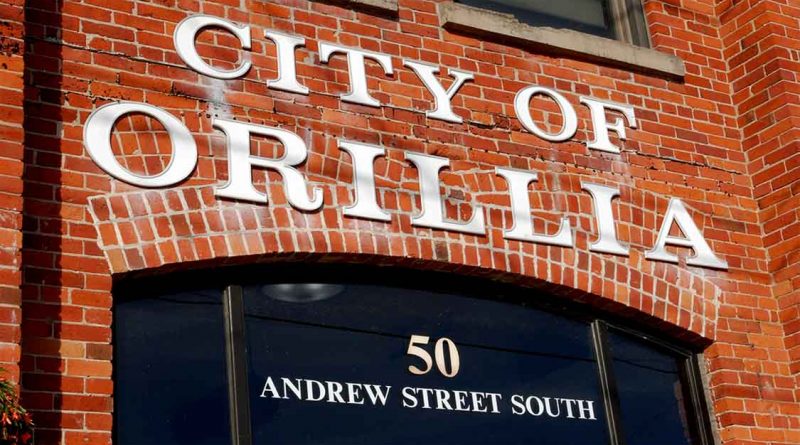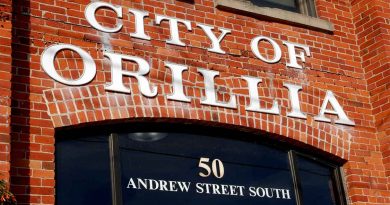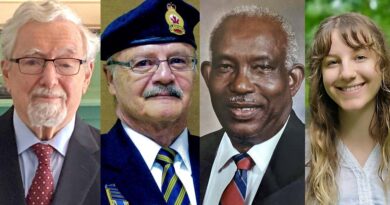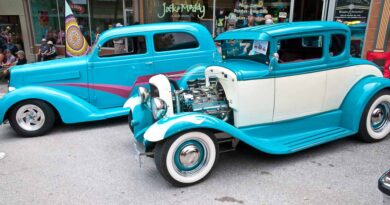Council Preview
By John Swartz
Monday afternoon’s Orillia council committee meeting has a light agenda as we begin the election period and council cannot make any major decisions. One thing however, jumps off the consent agenda list. Being that part of the agenda, there likely will not be any discussion, so we’ll look at it here.
In the City’s zoning by-law there is a section prohibiting adult entertainment parlours and body rub parlours. It occurred to someone over at the Opera House that particular section could apply to the Opera House and productions happening there.
If this place was Orillia, Alabama, Or Orillia, Tennessee it would not be inconceivable someone with a main character complex would complain to City Hall shows like Chicago, or Hair, Sweet Charity, Sexy Laundry, The Best Little Whorehouse in Texas, and Comic Strip contravene the by-law (only Hair had about 30 seconds of nudity and this writer does not recall Sweet Charity ever playing here in the last 33 years), but here in the sane part of the world, it’s difficult to imagine anyone trying to pull that one off – despite evidence we are headed in that direction.
Maybe because there are elements in society losing their grip and complaining based on titles and not content staff is recommending council amend the by-law to exempt the Opera House from that particular provision.
The only other consent agenda item is about council expenses for the first half of the year. Councillor Ted Emond report no expenses. Seven others report amounts of less than $400 (gas, and cellphone costs) and councillor Mason Ainsworth reported $1,959.82 because he attended the AMO conference.
Reports
In other business, two of three reports are about traffic control and one is about the Opera House.
Of the latter, two complaints, only two, regarding the totem pole in the foyer of the Opera House have generated a report asking council to appropriate $1,300 from the operating contingency reserve to remove it.
Similar to judging a play by its title and not understanding the content, one complaint is about the second figure from the top – a clown, as being offensive; that complaint comes from someone who said they were a West Coast Indigenous person.
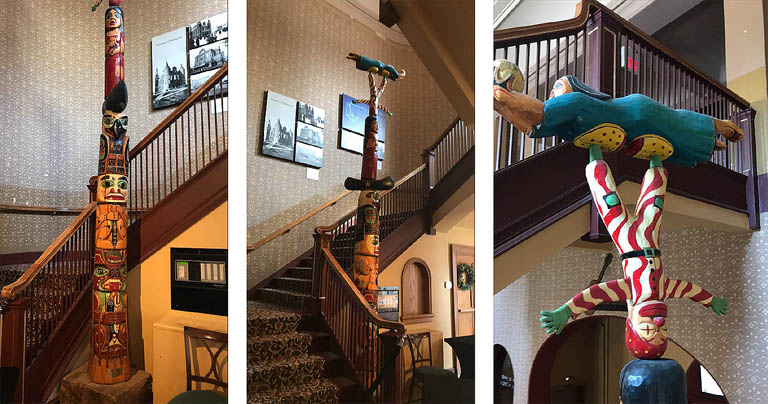
The other complaint comes from a Skén:nen kénha, the administrative director of the Ontario Presents Contact Ontour event happening in September at the Opera House demanding the art be removed for the event.
The stated reasons are:
- A totem is not representative of the territorial Peoples of the region of which Orillia sites.
- A totem is also a spiritual representative of the ancestral identities affiliated with the graves or burial areas.
- The design for the top third of the totem, in the form of circus figures is insulting, denigrating and to be frank, racist in its appropriated configuration of Indigenous culture, spiritual history/story and proud identity for West Coast Indigenous Peoples.
Never mind the artists, Jimi McKee and Wayne Hill, who designed and built the pole, are likely Canada’s foremost experts on totem poles, particularly those of the West Coast tradition, and that the design from bottom to top is original and representive of Orillia’s history, not only about but including its Native origin. The arguments presented are like saying all cars must look like they were designed and built by GM and all others are not cars and must be removed from sight. One wonders how West Coast Natives fell about Southern Ontario totems since they are different.
This is McKee’s description of the elements of the pole verbatim from the agenda:
AT BOTTOM IS THE FISHING WEIRS. THESE ARE REASON THAT THE
ORILLIA AREA WAS POPULARIZED THOUSANDS OF YEARS AGO.
THERE REMAINS ARE AT ATHERLEY 2 MILES EAST OF THE
DOWNTOWN AREA. THE BEAR IS THE NEXT CREATURE HOLDING A
TROUT. THIS IS DEPICTING ALL OF NATURE . THE NATIVES FROM THE
NORTH END OF THE LAKE ALL WERE HUNTERS AND FISHERMEN.
CHIEF MUSQAKIE IS HOLDING A CEREMONIAL TALKING STICK. ON THE BACK IS A STICK FIGURE OF A DEER. THIS THE FIGURE THAT
HE USED ON THE DOCUMENT THAT ALLOWED ORILLIA TO EXIST. IN
1834 THE TOWN BECAME NEWTOWN. IN 1866 THE TOWN WAS
RENAMED ORILLIA. THE FACTORIES AND CHURCHES ARE CARVED
ON THE BACK ORILLIA’S NEWSPAPER WAS BORN IN 1867 IT WAS
NAMED ‘THE EXPOSITOR” . ” QUID PRO QUO” REPRESENTS A GIFT
FROM AN AMERICAN OF THE NORTH WEST PORTION OF THE TOWN IN
THIS TIME FRAME. IT MEANS “SOMETHING FOR NOTHING” AND WAS
THE NEWSPAPER HEADLINE. “SAM,L OF POSEN” WAS THE FIRST PLAY
AT THE OPERA HOUSE. THE BURNING OPERA HOUSE IS THEN CARVED
ON THE POLE AS IT LOOKED IN IN THAT TIME FRAME. ON THE
FRONT IS A RAVEN ABOVE THE CHIEF. THE RAVEN IS THE CREATOR
OF THE WORLD AND REPRESENTS THE CREATIVITY THAT EXISTS IN·
THE OPERA HOUSE. THE CANOE REPRESENTS THE FIRST BOAT
FACTORIES ON THE WATERFRONT. DITCHBURN AND ROLLAND
BOATS ARE PAINTED ON THE CANOE. THE GIRL ON TOP OF THE
CANOE IS PLAYING A FLUTE. A PALETTE ,PENCIL , PAINT BRUSH ,
AND THEATER MASKS ARE ON HER BEADED DRESS TO REPRESENT
THE ARTS IN OUR TOWN. THE UPSIDE DOWN CLOWN IS CARVED TO
SALUTE THE COMEDIANS ,AND HUMORISTS LIKE STEPHAN
LEACOCK WHO IMMORTALIZED OUR TOWN. THE NATIVE ANGEL
FLOATING ON THE TOP OF THE POLE IS GUIDING THE TOWN ON ITS
FUTURE PATH. THE WORLD IN HER HANDS IS TO REMIND US THAT
WE CONTROL OUR DESTINY AND TO THINK TWICE AND ACT ONCE.
THIS IS ONE OF THE LARGEST PIECES OF PUBLIC FOLK ART IN
ONTARIO AND WAS CONCEIVED IN 1999 BY WAYNE HILL AND JIMI
MCKEE.
The City’s health and safety officer reported regarding the structural integrity of the art. An additional letter from McKee provides more information about the process of design and addresses some of the structural concerns, making a concession to altering it. It should be noted McKee’s letter predates by three years the staff report.
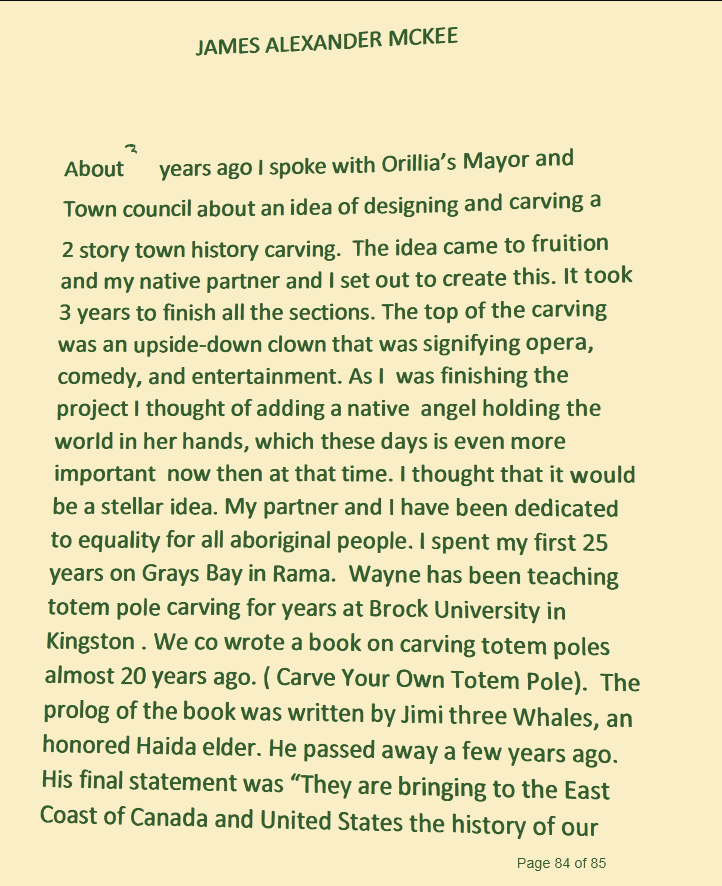
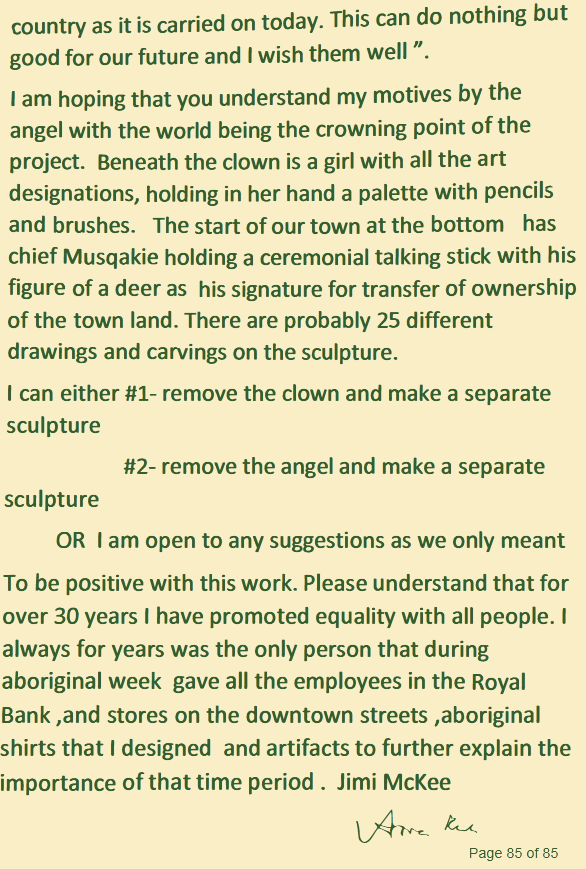
Stop Right There
Two reports are related to requests for all way stops at four intersections in Orillia; Westmount and Rose, Matchedash and Elgin, Nottawasaga and Douglas, and Nottawasaga and McKenzie.
In November 2021 council waived policy for traffic calming and directed staff to report on the feasibility of taking action at those intersections. However, reports from early this year on all four were received as information by council, which means taking no action.
This new report presents results of staff investigation at those intersections and finds no criteria for installing stops was not reached. Staff are again recommending the issue be recieved as information. They do however, have a second option to install solar powered speed signs on Nottawasaga at a cost of $15,000 and $200 operating expense annually.
The second related report regards updating the traffic calming guidelines. New guidelines would refine definitions for raised intersections, narrowing streets near intersections, and creating less than straight paths on streets by altering curbs or painting lane dividing lines of an irregular path.
The new policy would also allow for council to waive policy if neighbourhood residents pay for changes.
Council’s regular meeting will be on Thursday this week. The public can watch this meeting live on Youtube.
(Photos by Swartz – SUNonline/Orillia)

